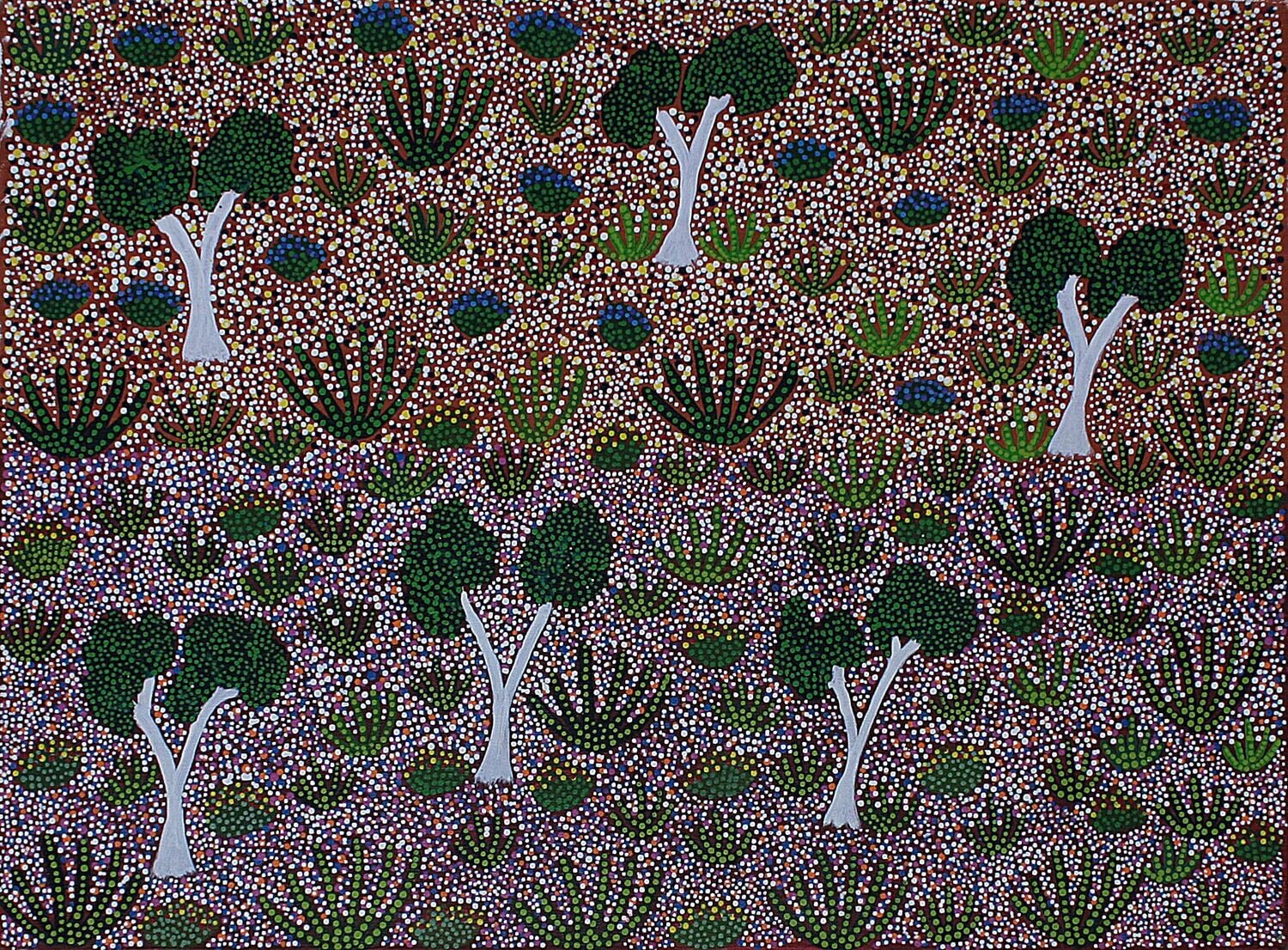My Country by Joyreen Holmes Kngwarrey, 61x46cm
My Country by Joyreen Holmes Kngwarrey, 61x46cm
This captivating painting beautifully portrays the layered landscape of Ampilatwatja, a remote community 320 km north-east of Alice Springs in Central Australia. In a place like Ampilatwatja, knowing your country is essential to daily life. It means understanding when and where to hunt and gather, recognising ‘soakages’—natural underground water sources—and travelling with family for ceremonies, all while maintaining a deep and enduring connection to the land.
Ampilatwatja artists have a distinctive approach to landscape painting, incorporating elements of traditional Western perspective. They create vibrant, intricate works that celebrate the abundance, diversity, and spiritual richness of their country. Their close relationship with the land is reflected in their use of a luminous palette and their meticulous technique, layering countless tiny dots to form shifting patterns that depict plants, geography, and light. The result is a mesmerising sense of shimmering desert vegetation and atmospheric brilliance.
Born in 1977 at Honeymoon Bore, Joyreen Holmes Kngwarrey comes from a family of artists. She has two sisters, Alana and Sarina, and a brother, Stevie. Speaking of her artistic practice, she says:
“My father’s country is Ampilatwatja. My mother’s country is Antarrengeny. I paint because I enjoy it, sitting around and talking. I like painting landscapes in the colours green, white, yellow, burnt amber, and red. When we’re not painting or working, we go hunting—for honey ants and bush potatoes. In the future, I just want to keep looking after my kids.”
Most residents of Ampilatwatja belong to the Alyawarr language group, whose traditional lands span approximately 17,000 square kilometres. This vast country includes the pastoral properties of Ammaroo, Murray Downs, Elkedra, Derry Downs, Utopia, Lake Nash, and Urandangie. Unlike many other Central Australian clans, the Alyawarr people have never been forcibly removed from their ancestral lands. They were never relocated to ‘foreign’ country, where they would have lacked traditional knowledge and cultural ties. As a result, their connection to the land remains unbroken, and their cultural knowledge is preserved in its full depth and richness.
It is this profound connection that gives Ampilatwatja art its distinctive resonance and power. Yet, this power is not overt; rather, it reveals itself subtly, through intricate compositions and a deeply personal sense of place.
The artistic approach of Ampilatwatja painters is markedly different from the well-known ‘dot-and-circle’ style of the Aboriginal desert art movement that emerged in Papunya in 1972 and spread across Central Australia. While the Papunya movement drew heavily on traditional iconography—using aerial perspectives, concentric circles, and ceremonial motifs—Ampilatwatja artists have forged a unique path. Their work focuses on an intimate, detailed vision of country, capturing the living energy of the landscape in a way that is both contemporary and deeply rooted in tradition.

